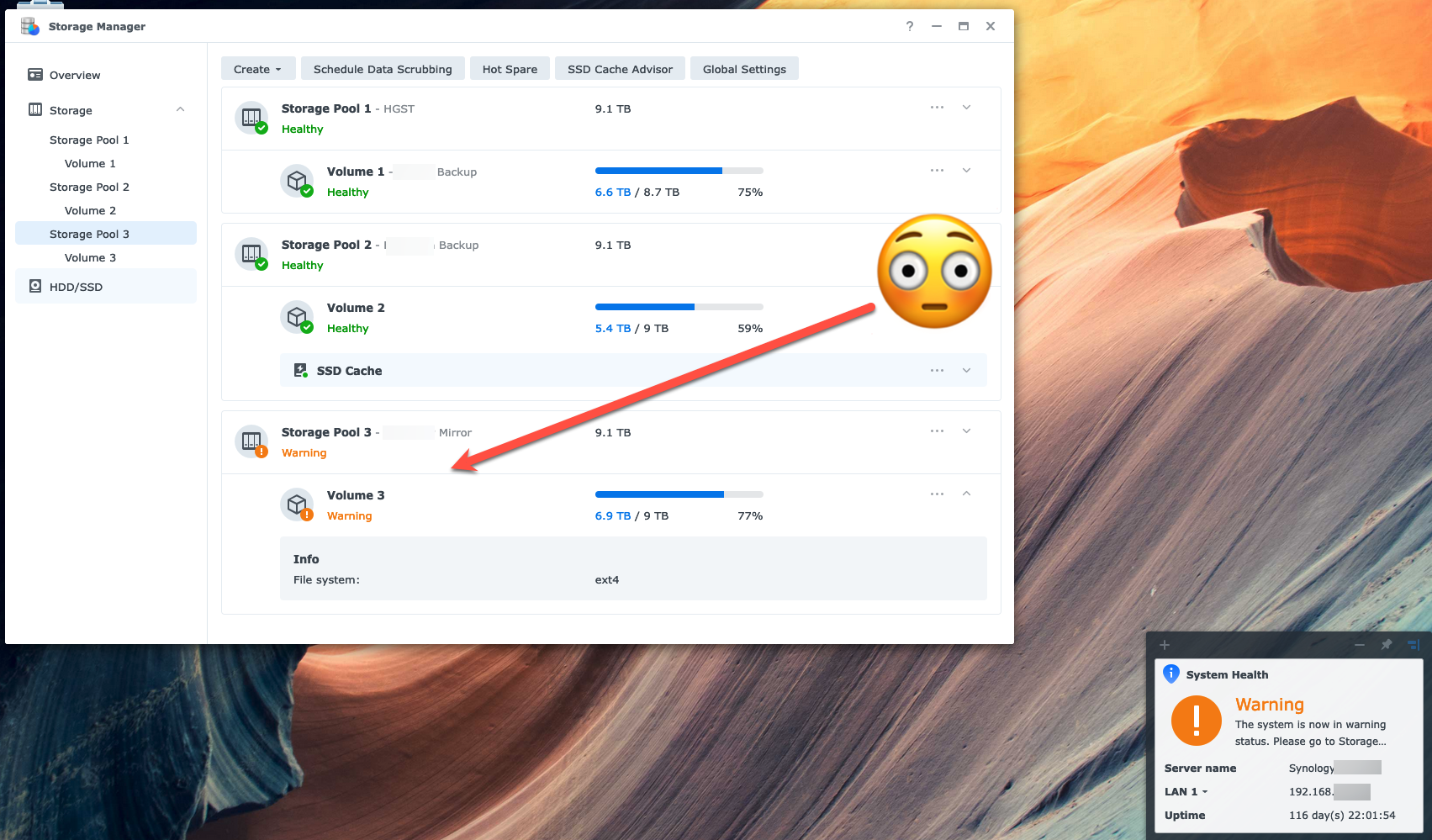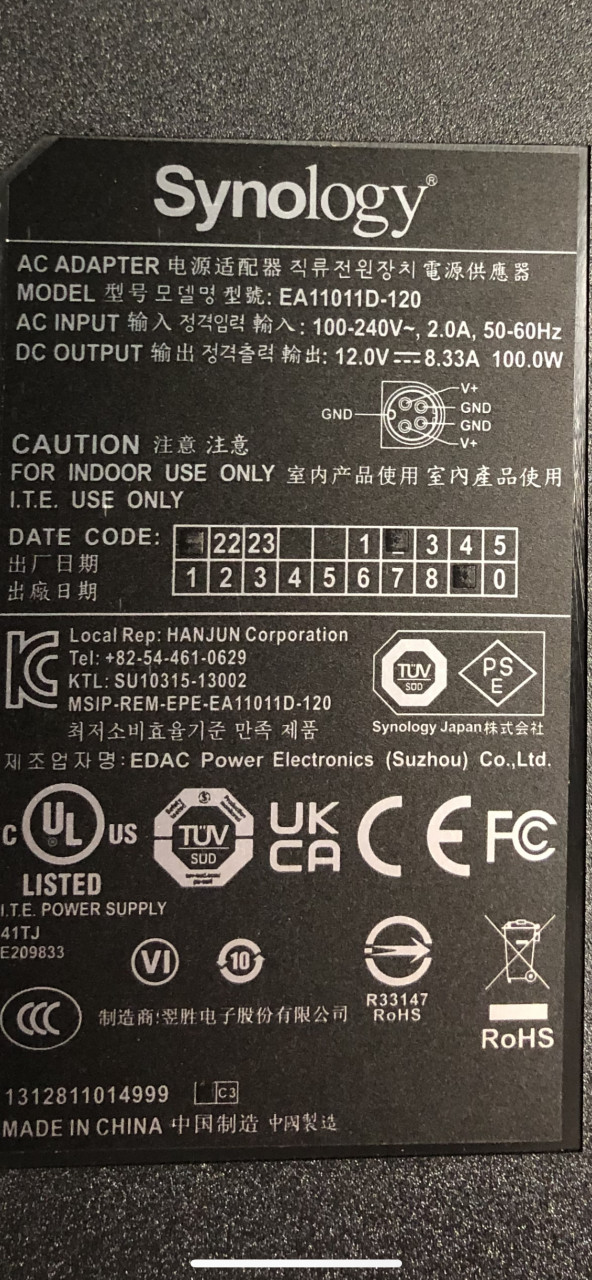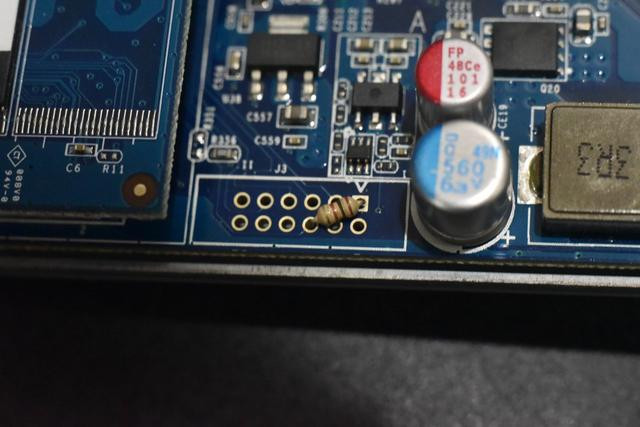A Paranoid Synology NAS Backup Strategy
Here is the TL;DR Summary - You cannot take a single standalone disk from inside a Synology NAS (whether in a JBOD, Basic, SHR or RAID Storage Pool) and read it outside a NAS in a computer. Doesn't matter if it's formatted BTRFS or ext4, a single disk by itself inside the NAS can only be accessed inside a NAS or a specially prepared computer.
It seems obvious that multiple disks that comprise a multi-disk storage pool need to be read together, but I was surprised to learn that a single disk in its own storage pool has the same limitation! Refer this thread. You cannot eject a single disk storage pool unless its in an expansion unit.
I'm a huge fan of having a NAS to collect and protect key data at home. Over the years I've migrated from a Synology DS210+, to Synology DS415+ (which I still have in service) and then a Synology DS918+ and a Synology DS920+.
I have generally filled them with disks that scored well on the annual Backblaze Drive Stats Report - which means HGST and Western Digital - both now actually the same company. Sometimes due to supply/availability issues I have used other brands, but usually they have not lasted very well.
The standard "best practice" strategy is known as the 3-2-1 Backup Rule. It generally states that you should have 3 copies of your data, on 2 different media with 1 copy being off-site. There are pros/cons to this approach, but generally I believe it is a sound way to protect your data.
Less often discussed though is the ease, effort and cost required for recovery. If you are trying to recover an off-site (or cloud-based) backup it can take time and incur large costs (cloud egress, for example). Even on-site backups may be difficult or slow to recover. For example, if you need to recover data from a broken NAS, you generally can't just stick the disks from the NAS straight into a computer, but need to follow a potentially complex process that requires equipment that you don't have readily available.
While the most likely failure point in a NAS is the physical disk itself, this failure mode is generally not catastrophic if using technologies such as RAID. So in fact, the most likely failure mode is also the most easy to manage.
A less likely failure is that the NAS itself dies. This has happened to me on a couple of occasions. This is the most painful failure mode.
- Example 1: DS415+ fails with dreaded Intel Atom C2000 flaw - Took several stressful hours to debug, Google and fix with some solder. Click here if you really want to learn the technical details.
- Example 2: DS918+ power supply fails - No readily available replacement power supply, needed to buy brand new NAS.
These two incidents have made me paranoid about NAS failure and as part of the 3-2-1 strategy I wanted a way that allowed an easy recovery in the case of a NAS failure.
My first solution was to create a Storage Pool on the NAS formatted ext4. The theory would be that if the NAS failed, the absolutely critical data that needs immediate restoration could be recovered by pulling the disk and attaching it directly to my Mac which can read ext4 either with macFUSE or extFS. On a Windows machine you can read ext4 pretty easily as well. Of course on a Linux box it would be read natively.
To avoid having to deal with this "under fire" I tested my theory and gasp it failed!. My research did lead to quite a helpful thread in the Synology forums.
Essentially a standalone disk in a NAS cannot be recovered in the event of NAS failure - a NAS failure will require all the disks in the NAS to be transplanted either to a new NAS or to a specially configured computer with enough capacity to have all the drives attached to it simultaneously. If you are planning to do this with a VM or even a small NUC type computer, you'll need a SATA->USB adapter for each disk and sufficient ports to attach them all simultaneously.
There is no safe way to remove a single Storage Pool even if the pool is made up of one disk!
The only solution is to mount the disk externally and attach it to the NAS as an external USB drive. It can then be formatted ext4 (or FAT32 or exFAT) to make it easily readable on any type of computer.
This option has several down sides though.
- You need an external enclosure which takes up more space and needs its own power supply (which can also fail).
- It is also in a less protected location outside the NAS chassis and doesn't benefit from the cooling capability of the NAS or even the SMART monitoring. There is a workaround here if you are happy to do something not directly accessible from the Synology DSM front-end.
- You will need sufficient external USB disk capacity to capture all of the critical data you want to save from potential NAS failure
The other option of course is to buy a second redundant NAS and sync them. This is very expensive but is another way to address the "2" in the 3-2-1 strategy.
Since writing the article, I found this thread which discusses mounting a JBOD disk. I will test it out and report back.
Posted: 13-Feb-2023


